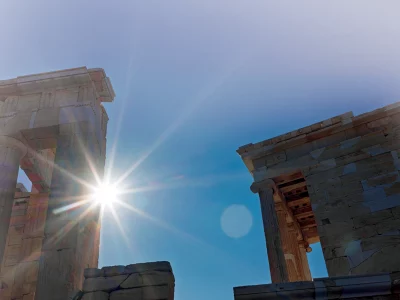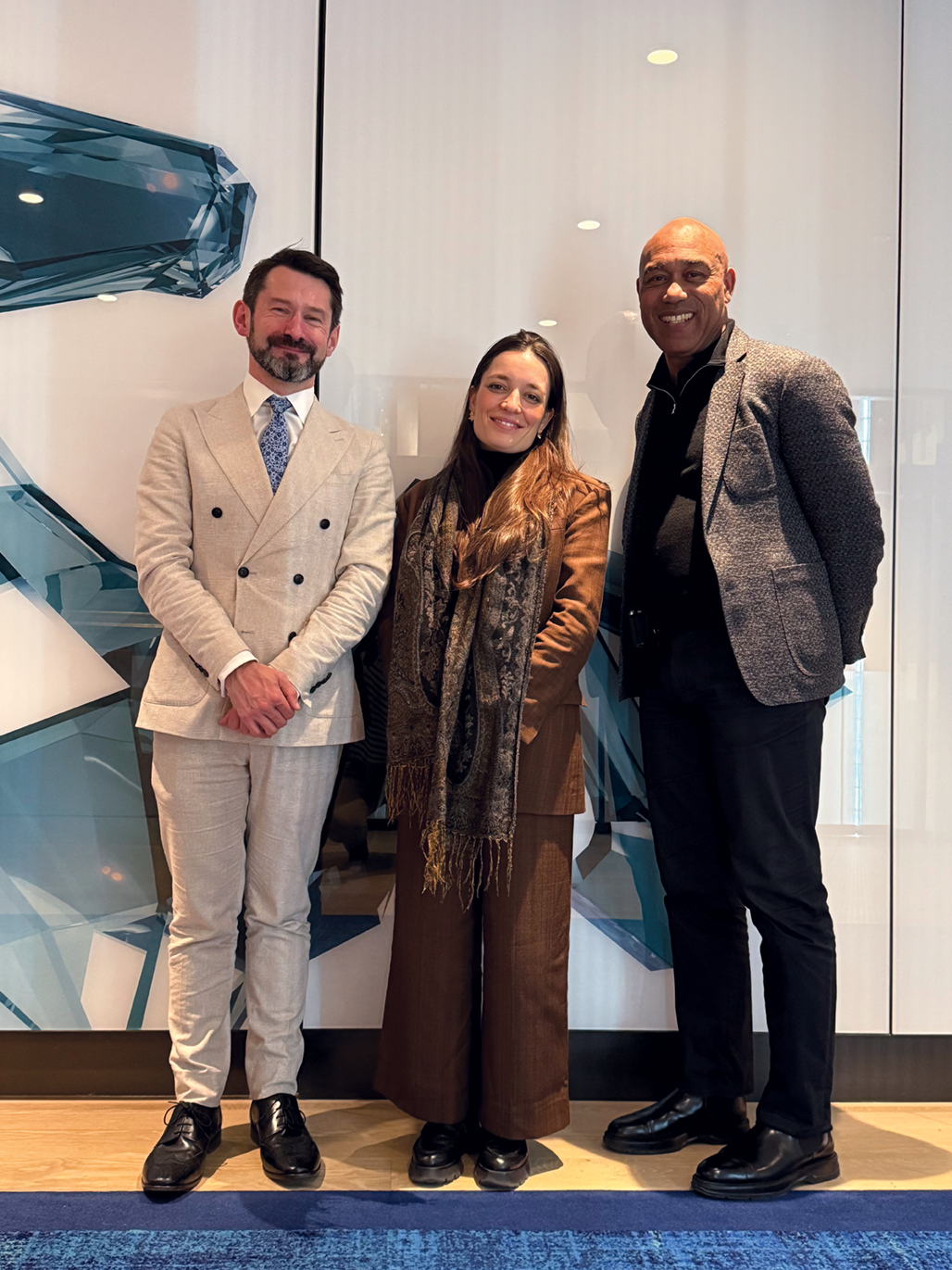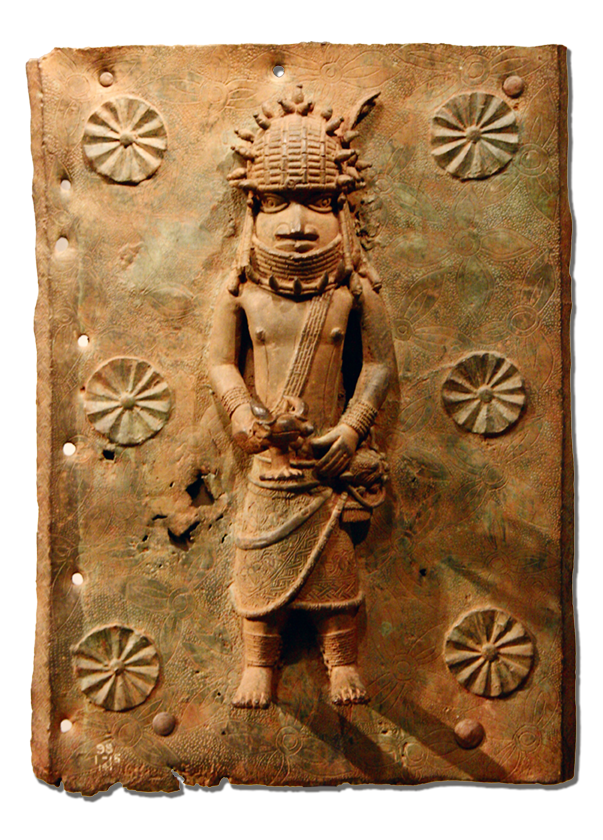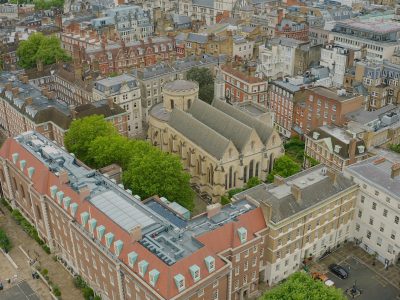

Social Context of the Law: Cultural Repatriation: Handing Back the Past
Taken from a panel discussion held on 18 March 2025 between Mona Yapova and Master Gus Casely-Hayford, moderated by Master James Lee.
Professor James Lee introduced the speakers, and the session’s aims, which were to discuss the moral and political questions in the context of the legal complications that cultural institutions encounter, particularly statutory charities, such as most of our very well-known museums. He emphasised that it was valuable to have a range of perspectives on what are urgent and controversial issues, and the discussion would be respectful of the sensitivities engaged.

Mona Yapova: Cultural repatriation and restitution are some of the most layered topics that I come across in my field. They are often not topics that can be resolved by the law alone, or at least the law is not yet fit to do them justice fully. Disputes and conversations about restitution and repatriation have for many years been stuck behind legal hurdles. However, these topics are increasingly being approached from a cross-disciplinary perspective, taking into account historical, art historical and cultural perspectives in an effort to find more balanced resolutions.
There is a history to the legislation that led to the complex and legal framework that we work with today. It took a long time to start legislating on the international protection of cultural heritage. As is often the norm with legal reform, we have legislated better for the future than we can for the past. Yet, when we speak of looting, we often think of looting during historic instances of armed conflict, such as colonial-era looting, Roman conquests, or the Napoleonic wars, all of which precede the history of international efforts to regulate the protection of cultural property.
This encompasses many years of established practices of what we refer to as looting – forcible taking, confiscations, takings under duress, and the concept of ‘prize rights’ and ‘trophies of war’. The countries that have suffered those removals have often had laws that regulate theft, but it has not been straightforward to rely on those laws to resist such takings.
What is key to understand in the context of historic looting, as it is in modern-day looting, is the need for international enforcement frameworks and co-operation. Heritage protection, insofar as it depends on legislation, is, by necessity because of the very nature of its subject matter, both a national and international effort.
International efforts to regulate heritage started in part with efforts to codify the laws of armed conflict. An example is the Lieber Code of 1863 in the United States, the Brussels Conference of 1874 and the work of the Institute of International Law. Those early efforts did not immediately translate into binding rules, but laid important foundations. They were, for example, followed by the Hague Conventions of 1899 and 1907. The latter was one of the first instruments to include provisions regarding the seizure of cultural property.
By the 1950s, more states that had been under foreign rule were gaining independence. Concerns about the growth of the black market began to rise. The first international convention dedicated to cultural heritage protection is the 1954 Hague Convention for the Protection of Cultural Property in the Event of Armed Conflict. It establishes the norms for military conduct among its ratifying States and is often used as a basis for military training. The commitments made by the States Parties to the Convention largely focus on conduct during times of armed conflict and serve to preserve cultural heritage.
However, the need to protect heritage from plunder during times of peace remained after the 1954 Convention. This led to the adoption of the 1970 UNESCO Convention on the Means of Prohibiting and Preventing the Illicit Import, Export and Transfer of Ownership of Cultural Property which set out to curb the illicit trade in cultural property. The difficulty with the 1970 UNESCO Convention is that its material and temporal scope are very limited. The value of the Convention has mainly been in standard-setting. For example, it provided guidance for ‘source’ countries on how to monitor heritage on their territory, and ‘soft law’ for best practice and co-operation between states. Almost every major museum now treats ‘1970’ as a hard line and will refuse to acquire objects that left their country of origin after that year without full documentation.
The 1970 UNESCO Convention was followed by the 1995 UNIDROIT Convention on Stolen or Illegally Exported Cultural Objects, which unfortunately did not have as much support as other conventions. Its aim was to rectify some of the shortcomings in the scope of the UNESCO Convention and amongst others bring private parties into the regulatory equation a little more. This was an important shift in the burden placed on collectors – not just museums, but also private parties that interact with the market – to increase their due diligence.
Later, in 1998, a number of governments that participated in the Washington Conference on Holocaust-Era Assets reached a consensus on and endorsed 11 non-binding principles known as the Washington Principles to assist in resolving issues surrounding specifically Nazi-looted art. The UK was one of those participating countries, and we have legislation that has come into force after those principles.

These are only some of the key international instruments in the sphere of restitution. The European Union has also passed directives about the return of cultural objects. We also have a regulation that is about to come into force at EU level that regulates the import of cultural heritage into the EU that has been illegally exported from its country of origin. This regulation places further increasingly stringent due diligence burdens on importers to establish the source of objects.
In the UK, the regulatory framework for restitution remains limited. It is often not designed to take into account all the intricacies of historical events, because much of it applies to all types of restitution. There are several civil and criminal statutes that regulate the liability of private individuals, but the key current limitation lies in national museums’ restricted powers to deaccession works. For example, under the National Heritage Act of 1983, the trustees of some national museums in the UK are specifically prevented from deaccessioning objects, except in very limited circumstances.
This is not necessarily ever only a blanket rule. We have legislation, such as the Holocaust (Return of Cultural Objects) Act 2009, which gives the governing bodies of listed national museums an additional power to return objects where the Spoliation Advisory Panel recommends that the object should be returned to a claimant and the Secretary of State approves the Panel’s recommendation. This is an example of a tailored framework designed to address and recognise the intricacies of a specific historical event, within the general rule.
The result of the restrictions placed on national museums is that we see objects that have a common history – like Benin Bronzes taken during the British Punitive Expedition to Benin City 1897 – face different barriers to repatriation depending on the institutional collection they are now in. Claims for repatriation and restitution of Benin Bronzes have been made to the British Museum, the University of Cambridge and the Horniman Museum recently, and, of course, museums across Europe. However, in the UK only the University of Cambridge has returned over 100 Benin artefacts, the Horniman Museum has restituted 72, but the British Museum has not been able to honour those claims in the same way. This is partly because charity law allows institutions in the UK that are not national museums to apply to the Charity Commission to make ex-gratia payments, which can include deaccessioning and returns, based on moral obligations. Recently and for a moment, the government considered giving national museums the power to apply to make such disposals under the Charities Act 2022, but eventually retracted this.

The most important national collections are often locked under strict legal provisions, and the UK is not alone in this. International frameworks have often had more buy-in from source countries than from important market countries, and we have better legal frameworks for present and future protection of heritage than we do for historic events. This being said, none of this necessarily is or should be static. It is only the law as it is now, and governments around the world are recognising these shortcomings and the importance of a considered, cross-disciplinary approach to reform.
Master Gus Casely-Hayford: My parents came to this country in the 1950s and we lived in South London, which felt like a different planet from the place that my parents would occasionally talk to me about as their place of origin, West Africa – my mother from Sierra Leone and my father from Ghana.
Then, one summer, my aunts came to visit. They came not just with stories, but with cases full of amazing kinds of fruits, which brought smells and tastes that I had never encountered. They also brought cloth – lengths of Kente, Ankara and Adire. Alongside these came incredible stories. They would unravel a piece of cloth that may have sat on a coffin a generation ago, telling the story of that moment and bringing history to life. And it was history. But it was history unlike anything that I had heard before, and I knew immediately what it was that I wanted to do.
I wanted to get to West Africa and to see these amazing objects in the context in which they were created, to see the museums and the spaces where I could really embed myself in the rich histories. I remember going to the National Museum of Ghana. I must have been about 16; I saved up and took myself there, with a huge amount of expectation and excitement. Only to see a space that was well-loved, but unable to tell those histories that I had heard and read about. The material culture, the material evidence of those peoples, simply was not in those spaces.
Even though I already had an understanding that I wanted to do something in the space of heritage, in that moment I also understood that there was a kind of moral imperative, something that really needed to change. The cultural representation of the stories of African people is something that we, in this country, have the privilege of being able to explore in ways that so many people in their countries of origin simply aren’t.
As soon as I was able, I applied for a role at the British Museum. I was part of the first team that moved the Africa collection from the old Museum of Mankind back into the British Museum space. It was a really deeply emotional moment to see those objects become part of the wider British Museum collection.
At the heart of the collection were those Benin plaques, and they looked absolutely incredible. But there was that lingering question of how can we feel comfortable that we can tell these stories in such rich and wide ways when the countries of origin are simply unable to do so?
It always felt uncomfortable to me. I would ask my colleagues and my superiors about when we might be able to begin those debates – when might it be possible for us to think about the return? This was 25 years ago. I was told, not within my career. I was aware that the 1963 Act did allow for the return of objects if they were duplicates. Any amount of research will tell you that the British Museum quietly deaccessioned some Benin plaques in the post-war period. Because of the way that those plaques are individually created using the lost-wax process and hung as pairs, the idea that they could have been duplicates is obviously not the case. But some of them were returned; there were precedents for the return of objects.
I began to think about how we could begin to shift hearts and minds. One area I invested time in was thinking about the situation in Ghana. The national museums there had begun to think about building a new suite of buildings so they might be able to establish loans and build a new collection. Curators there were constantly in touch, asking about the possibility of us building curatorial partnerships, beginning to develop the conversation which would at some point end in the beginning of loans and the return of those objects.
The situation in Ghana is personal to me. In 1873, the British sent a force of about 1,500 soldiers, armed with Enfield rifles and Gatling guns. By the Spring of 1874, they had marched on the capital, Kumasi. They burnt most of the capital to the ground, captured the King and stole the contents of the royal treasury. Much was then transported to the coast, and from there it was taken to London. Some of it was sold by Garrard in an auction, and it was spread to the high winds, some ending up in the Wallace Collection, the British Museum, V&A and private collections. These amazing gold objects then sat in various collections for 170 years, and the law didn’t change. We still cannot return these objects, but the will and the shift in consciousness has changed.
Even though I already had an understanding that I wanted to do something in the space of heritage, in that moment I also understood that there was a kind of moral imperative, something that really needed to change.
That George Floyd moment, that shift in consciousness across the world around issues of equity and diversity, had a profound impact on museums. There was a sense of urgency, and locked gates suddenly opened. The conversations that had been put on hold suddenly began to move. The French made promises; my old institution, the Smithsonian National Museum of Art, returned objects. And then, the Horniman, Cambridge. The pressure began to mount on the nationals to do something. There are two acts, the 1963 Act and the 1983 Act, which make it very difficult for us to return objects. Even though we couldn’t return them, there was something else that we could do. We could potentially broker the opportunity for a long-term loan of objects.
That George Floyd moment, that shift in consciousness across the world around issues of equity and diversity, had a profound impact on museums.
In the V&A collection, we had a range of exquisite objects. As part of the programme of events in advance of the opening of my museum, V&A East, I made a commitment to visit every single school in East London – more than 80 of them. I was keen for us to take these objects out into the communities and give people the chance to handle them, to get up close to them. Some of those encounters were enormously emotional. I would sit in front of whole school assemblies in East London, where there would be 600 students, only a handful of whom weren’t of African descent.
I would talk to them about the stories of these objects, and you could see in their eyes that they felt the sense of wonder to be close to these objects, but also the sense of them questioning, ‘How can we have national institutions that are doing this on our behalf?’
It felt to me that a time in which this had been acceptable had passed, and I was proud that the collection of objects was loaned back to Ghana, and they are now on display in the Palace Museum. Limited by statute, we could only return them on loan, but the Fowler Museum returned theirs without any conditions. They are on display in the palace in a new space. It’s one of the things that I think over the course of my career I feel most delighted to have witnessed and, for me, a point of closure on a chapter that began with my aunts coming into our living room and not just opening up their cases with amazing cloth and incredible gifts, but also with stories. It is wonderful now to see them, in some way, continuing their course in West Africa again.
Mona Yapova
Art Law Specialist, Mishcon de Reya
Dr Gus Casely-Hayford OBE
Director, V&A East
Professor James Lee
Professor of English Law, King’s College London
For the full video recording:
innertemple.org.uk/handingback
